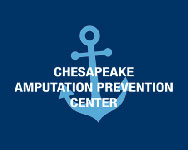Experiencing a painful foot or ankle issue and want information on common conditions and treatment options? Browse our online podiatry library for in-depth articles from the board-certified specialists at the Annapolis Foot & Ankle Center.
- Page 1
-
Your December Guide to Healthier Feet and Holiday LivingLearn how to protect your feet and lower legs this winter, recognize common seasonal conditions, and try a healthier homemade eggnog recipe.
-
My foot wound doesn’t hurt. Should I see a podiatrist?A foot wound without pain can still be dangerous. Learn the hidden risks, warning signs, and how Annapolis Foot & Ankle Center helps prevent serious infection
-
Grateful Feet: November Tips for Comfort & HealingFrom diabetic-friendly food tips to plantar fasciitis relief and a sweet potato recipe that’s perfect for your Thanksgiving table.
-
Foot Wound Care for Seniors: Understanding Age-Related Challenges and Practical SolutionsLearn how age-related challenges affect senior foot health and why regular visits to an Annapolis podiatrist are vital for wound prevention and healing.
-
Step Into Comfort This October: Foot Health Tips, Orthotics, and a Festive RecipeFrom autumn foot pain and orthotic solutions to tendonitis care, discover ways to keep your feet healthy and supported this season.
-
Step Safely Into Fall: September Foot Health Tips & Prevention InsightsFrom fall prevention tips and turf toe treatment to osteoarthritis care and a healthy Mediterranean recipe, explore ways to keep your feet strong and pain-free this September.
-
Back-to-School & Beyond: August Foot Health Tips for the Whole FamilyFrom back-to-school foot care to diabetic tendon health and blister tips, plus a delicious Italian recipe, get the latest insights from your podiatry team.
-
Foot and Ankle Biomechanics and Gait AnalysisOur board-certified podiatrists use gait analysis and biomechanical assessment to identify the root causes of not just foot pain, but...
-
Advanced Wound Care Technologies and TreatmentsAdvanced wound care at Annapolis Foot & Ankle Center: PRP, stem cell therapy, HBOT, NPWT, and more to treat chronic foot wounds and prevent complications.
-
Occupational Foot Health and Work-Related Foot InjuriesOur board-certified podiatrists understand how workplace conditions contribute to foot problems and provide specialized treatment and prevention strategies.






